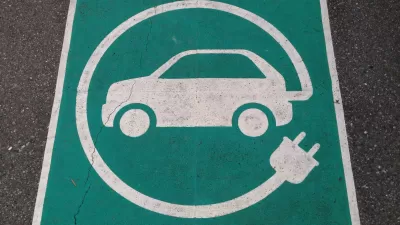Gov. Jerry Brown signed stripped-down legislation that sets a target for the state of generating 50 percent of electricity from renewable sources by 2030 and doubling energy efficiency standards in buildings by the same year.
"The law, signed [Oct. 7] by Gov. Jerry Brown, accelerates California’s shift away from fossil fuels as its dominant source of energy and marks another milestone in the state’s fight against climate change," writes David R. Baker, energy and clean tech reporter for the San Francisco Chronicle.
Credit: Clean Energy Authority.com
“We’ve got to realize that we are here today because of oil — oil and gas, to a lesser extent, coal,” Brown said at a signing ceremony overlooking a hazy Los Angeles from the Griffith Observatory. “What has been the source of our prosperity has become the source of our ultimate destruction, if we don’t get off of it.”
While the state's utilities are clearly on a path toward renewables and away from fossil fuels, the same can not be said for its drivers, notwithstanding the increase in electric vehicles (EVs) on the road. "For the first time since 2006, gasoline consumption in California increased from the prior fiscal year," notes a Dec. 4, 2014 post. " From July 2013 through June 2014, consumption increased 1 percent."
The third element of SB 350 would have addressed that increase by setting a state target of cutting oil consumption in half by 2030, but it proved too controversial for moderate Democrats so it was removed. However, all is not lost as the bill contains a "less noticed section that delivers a big boost for zero-emission vehicles," writes Assemblyman Rich Gordon (D-Menlo Park) in an Opinion for the San Francisco Chronicle.
Electric vehicle provisions in the legislation serve as an alternate, additional and electrifying route toward reducing fossil-fuel dependence and air pollution...The California Public Utilities Commission (CPUC) will soon be determining what role the electric utilities will play in the development of electric vehicle charging infrastructure.
The commission also must allow property owners and not utilities to choose the electric vehicle charging equipment and services best suited for their individual site. Anyone who drives an electric vehicle in California now, or anticipates driving one in California in the future, has something to gain from having a choice when they pull into a parking spot to charge up.
The 50 percent target is not the nation's highest renewable portfolio standard.
Other states have adopted their own renewable power goals, a few of them higher than California’s. This year, Hawaii passed legislation calling for 100 percent renewable electricity by 2045, while Vermont set a requirement of 75 percent renewable power by 2032.
A related bill expands the powerful, 12-member California Air Resources Board (CARB) to include a member appointed by the Senate Rules Committee and one by the speaker of the Assembly. It came as a surprise that Brown signed AB 1288, according to a Sacramento Bee "Capitol Alert".
FULL STORY: Brown signs climate law mandating 50% renewable power by 2030

Trump Administration Could Effectively End Housing Voucher Program
Federal officials are eyeing major cuts to the Section 8 program that helps millions of low-income households pay rent.

Planetizen Federal Action Tracker
A weekly monitor of how Trump’s orders and actions are impacting planners and planning in America.

Ken Jennings Launches Transit Web Series
The Jeopardy champ wants you to ride public transit.

Washington Legislature Passes Rent Increase Cap
A bill that caps rent increases at 7 percent plus inflation is headed to the governor’s desk.

From Planning to Action: How LA County Is Rethinking Climate Resilience
Chief Sustainability Officer Rita Kampalath outlines the County’s shift from planning to implementation in its climate resilience efforts, emphasizing cross-departmental coordination, updated recovery strategies, and the need for flexible funding.

New Mexico Aging Department Commits to Helping Seniors Age ‘In Place’ and ‘Autonomously’ in New Draft Plan
As New Mexico’s population of seniors continues to grow, the state’s aging department is proposing expanded initiatives to help seniors maintain their autonomy while also supporting family caregivers.
Urban Design for Planners 1: Software Tools
This six-course series explores essential urban design concepts using open source software and equips planners with the tools they need to participate fully in the urban design process.
Planning for Universal Design
Learn the tools for implementing Universal Design in planning regulations.
Heyer Gruel & Associates PA
Ada County Highway District
Institute for Housing and Urban Development Studies (IHS)
City of Grandview
Harvard GSD Executive Education
Toledo-Lucas County Plan Commissions
Salt Lake City
NYU Wagner Graduate School of Public Service




























